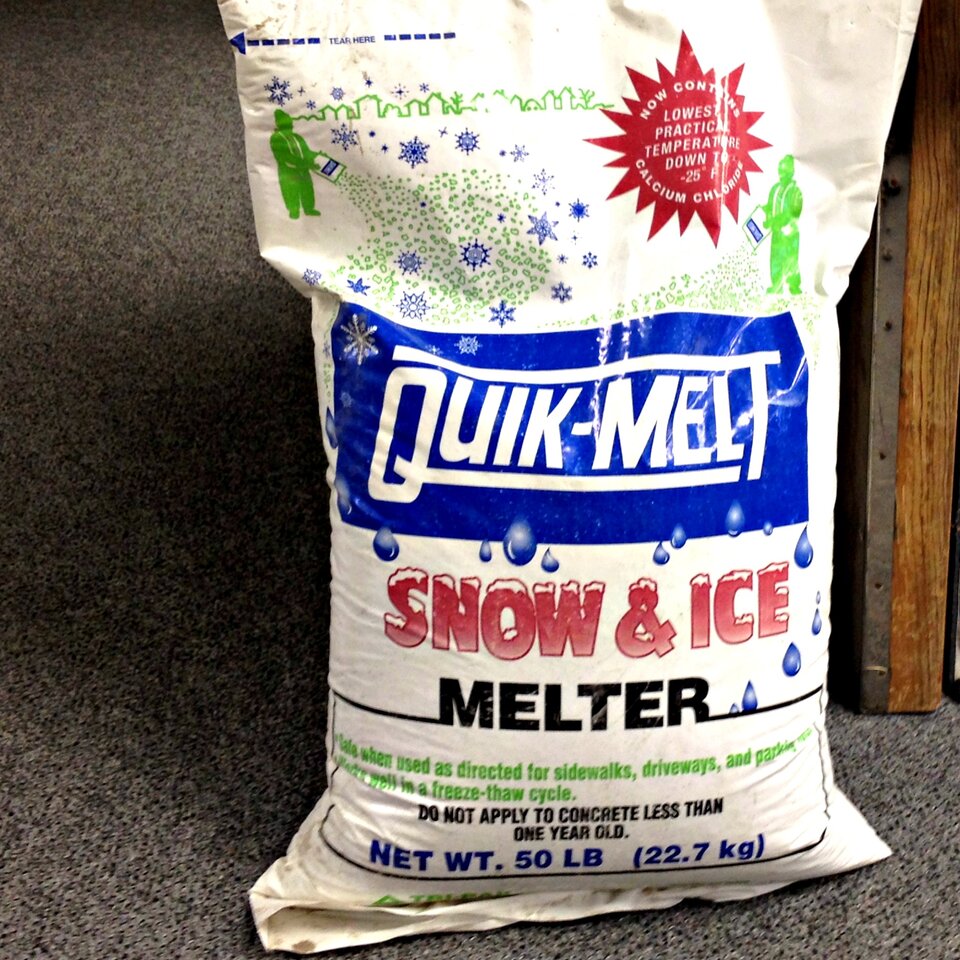Using Deicers Safely in your Landscape

With winter in full swing, it is a common practice to use deicers on our sidewalks and driveways to prevent falling on ice. With deicing agents, we need to be careful to not harm our plants when we use them and make good choices on what we use.
Deicers can cause damage to our concrete sidewalks and to our plants growing beside them. Many deicing agents contain salt substances, such as sodium chloride and potassium chloride. Because of the salt content found in these products, it can cause severe damage to our plants if too much is piled on them too often. Typical plant symptoms of salt damage are desiccation (drying out), stunting, dieback, and leaf margin and tip damage that looks as though the leaves were burned by a chemical.
To avoid damage to the concrete, remove the salt as soon as you can. Deicers are meant to make shoveling easier, not to completely melt away the snow and ice. As soon as the salt melts through the ice and snow enough that it can be removed, go out and shovel it off of the concrete. When removing the snow, do it in a manner that protects the landscape plants growing in the yard. Do not pile the snow onto trees, shrubs, or flower gardens. If it has to be piled onto your landscape, move the salt onto the grass and try to do it in a manner that makes it more uniform on the grass surface. If too much salt continually gets piled up on the grass in one location, the turf can be harmed.
If you are very concerned with the effect the deicers have on your plants, you can use alternate products for melting the ice. Calcium magnesium acetate is a deicer that contains no salt. This is a safe alternative to the regular salts because it does not harm plants or animals and can be used on concrete because it doesn’t cause the damage that salt does. It is also less damaging to the environment that some of the other choices, but runoff of this product can degrade water quality in the surface water. You can also choose to use sand on your concrete, which will cause no damage to the plants in your landscape, this will not melt your ice, but it will give you traction to walk on the sidewalk. Sand and gravel will not cause any harm to your plants and minimal damage to the environment but it will have to be swept away after the snow and ice melts.
Another snow related topic is that of the snow and ice resting on your tree branches and on top of your shrubs. The snow can be removed with a broom if you desire to do so, but can be left alone to melt for no damage to the plants it is sitting on. As for the ice, let it melt naturally. Do not try to hit the ice off of the tree branches because this can cause you to break some of the branches, which will be more detrimental to the plant. If there is snow on your tree causing it to bend down, it will reform in the spring once the snow melts off of it.
This article was reviewed by John Fech